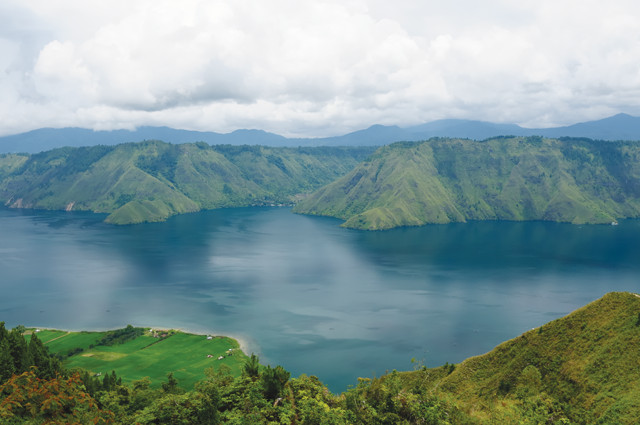
by Mary Caperton Morton Monday, February 2, 2015

Lake Toba in northern Sumatra was created by an eruption from a supervolcano about 74,000 years ago. Credit: ©dollarphotoclub.com/RCH.
Giant eruptions from so-called supervolcanoes eject tremendous volumes of lava and ash, but details about the source of all that volcanic material have been unclear. Now, a new study has found that magma reservoirs intrude into the crust under volcanoes over millions of years in the form of multiple horizontally oriented chambers stacked on top of each other, like a stack of pancakes.
The new study, published in Science and led by Kairly Jaxybulatov of the Siberian Branch of the Russian Academy of Sciences in Novosibirsk, focused on the Toba supervolcano in Sumatra. Toba last erupted about 74,000 years ago, ejecting 2,800 cubic kilometers of volcanic material and leaving behind a massive collapsed caldera, which now holds 80-kilometer-long Lake Toba.
By installing a seismic network around the area, the team was able to use microtremors in Earth’s crust to image the former magma reservoir. They found that the crust 7 kilometers below the supervolcano was layered with many magmatic intrusions, most horizontal and some still containing molten material.
More research is needed to determine whether the same stacked structure underlies other supervolcanoes — such as at Yellowstone National Park in Wyoming or Lake Taupo in New Zealand.
© 2008-2021. All rights reserved. Any copying, redistribution or retransmission of any of the contents of this service without the expressed written permission of the American Geosciences Institute is expressly prohibited. Click here for all copyright requests.